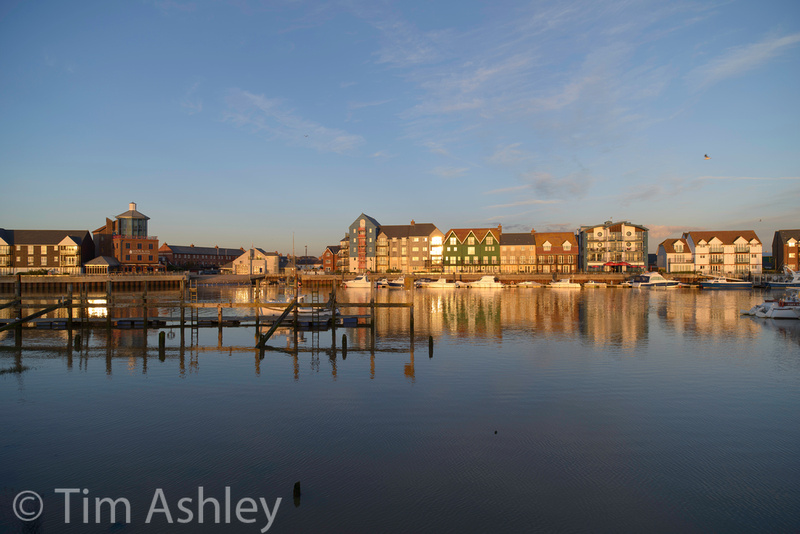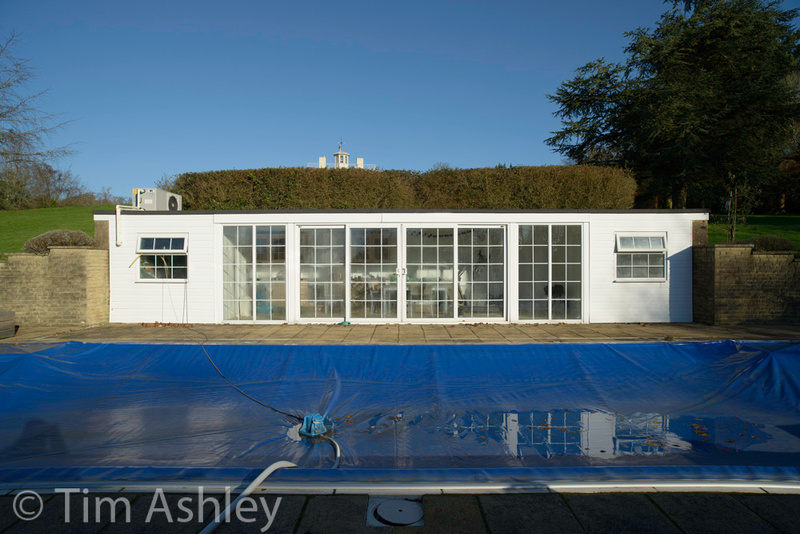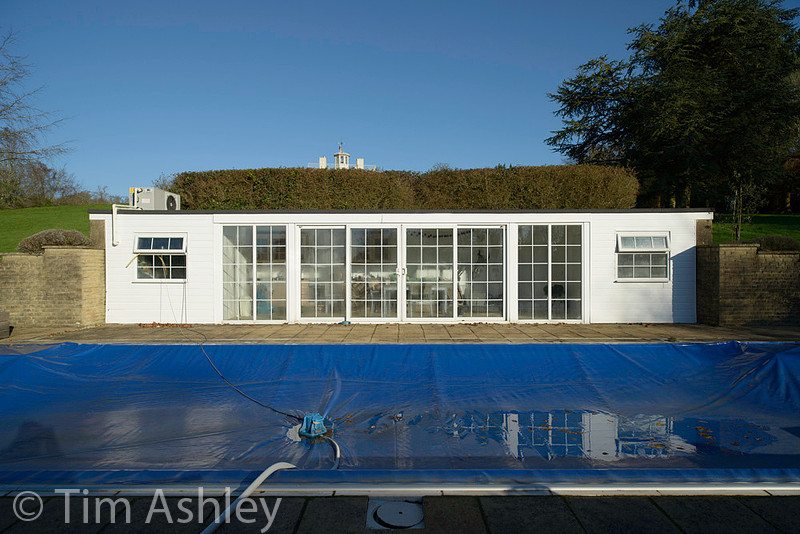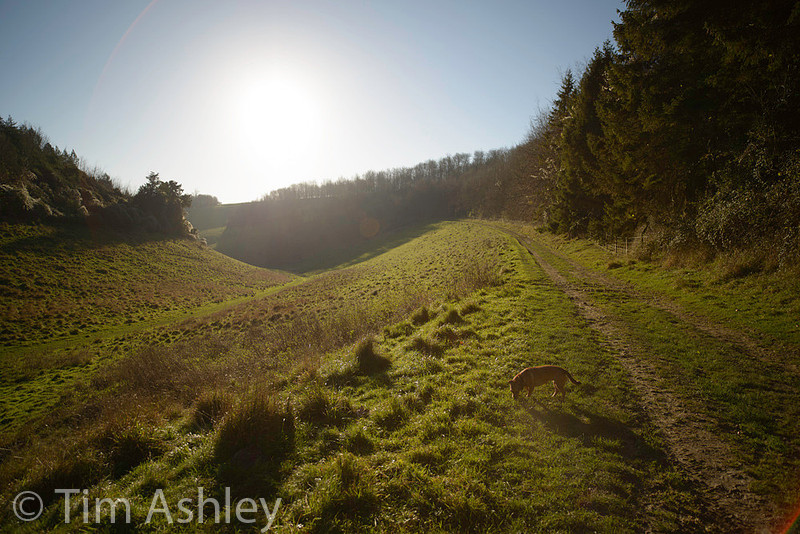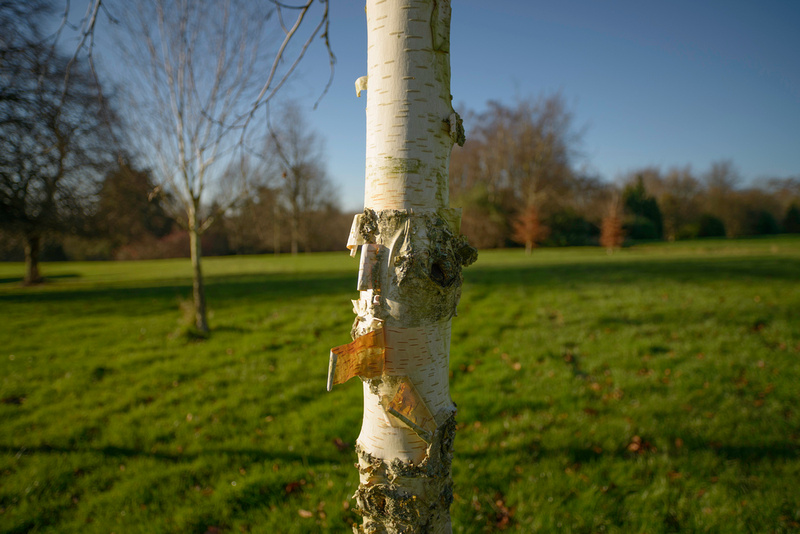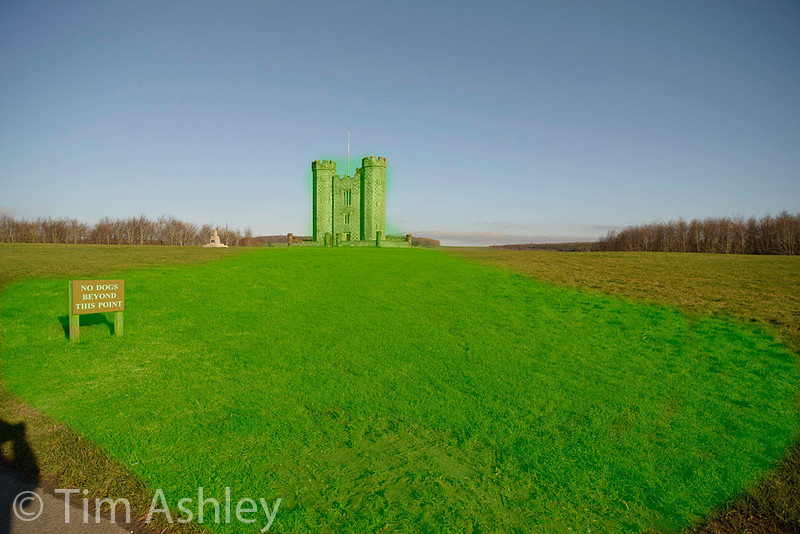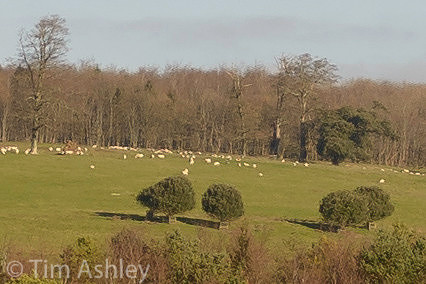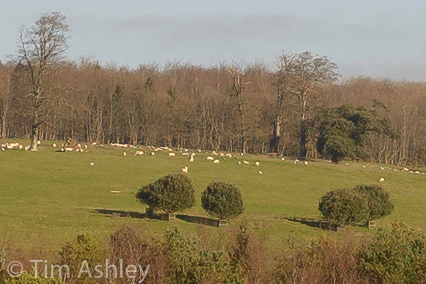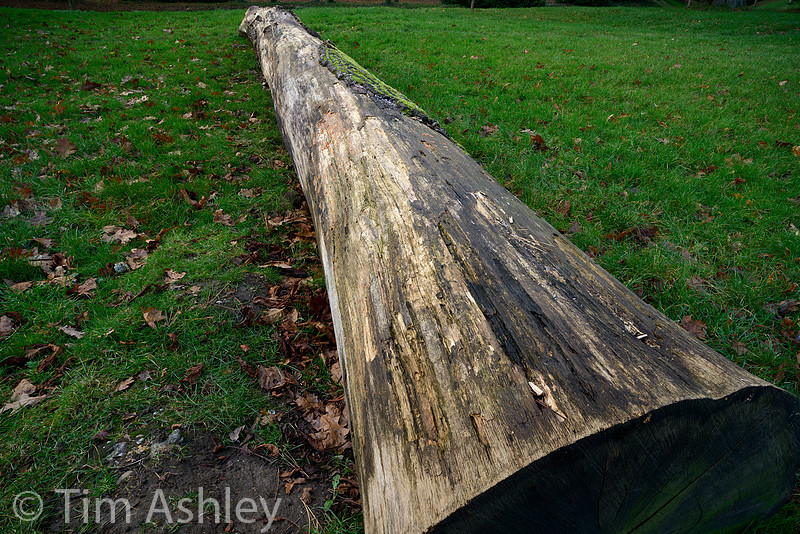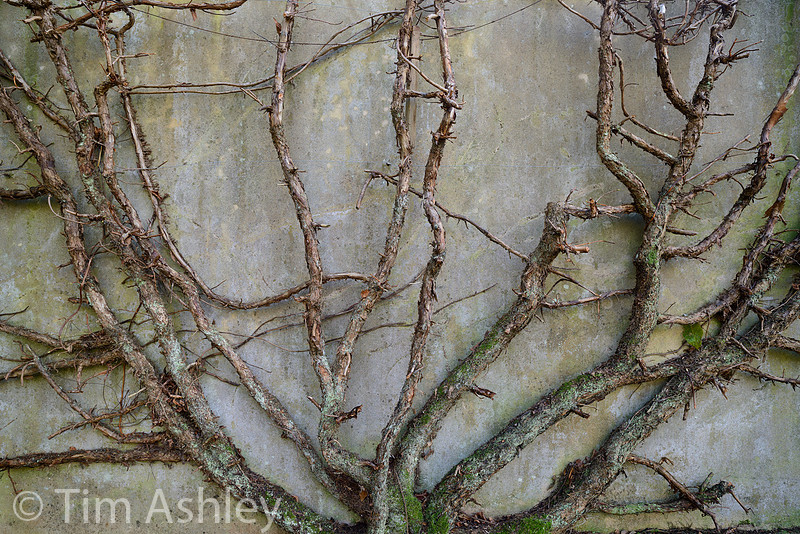Zeiss 21mm F2.8 ZF2 on D800e: Field Review, Tips 'n' TricksThe D800 (let alone the 'E' variant) doesn't just squeeze every last drop of resolution out of your lenses - it leaves most of them begging for mercy. Wide angled lenses especially, with their inherent design compromises, can be shown up by the very discerning Nikon and those craving edge-to-edge and corner-to-corner sharpness on a 40" print often have to use longer focal lengths to get it. The 21mm F2.8 from Zeiss, with its much-vaunted pedigree (it is effectively a re-branded and updated version of a Contax lens that was widely considered the ne plus ultra of its time) is often recommended as the best way to shoot wide with a D800 and it is indeed very very good. But it's not perfect, and, to be harsh, in the final analysis a better lens is needed. Firstly, an aperture series: if you don't have the time or bandwidth to look at these shots in detail, I can summarise by saying that the lens has fabulous sharpness and resolution on centre wide open, peaking (but only by a tiny margin) at F5.6 but that if you want your edges and corners in as good as possible a compromise with the centre, you'll need F8 or even F11 at a push. If you value low light fall-off, F8 is the first aperture at which vignetting becomes hard to discern. And if you want the best 'magic' of contrast, micro-contrast and just sheer visual fireworks, shoot at F5.6 and live with less-than-perfect edges. Anything over F11 and you are throwing away detail in bucketfuls on centre. But later on, I'll suggest a way of 'having it all'... as long as you have a tripod with you. This is the test scene shot at F2.8
Please note that these shots have lens corrections applied, and sharpening in LR of 60/0.7/70/20 There are very, very few 'technical' review of this lens on a D800 or E so it's worth noting here that the excellent LensRentals list of recommended lenses for the D800 has it at 1180/940 (MTF 50, centre and edge) on a D800 but notes that that the Zeiss 100m Makro Planar is very notably better on the D800E than on the D800 so, in the light of no data for the 21mm on the 800, I can say that my guess based on experience is that the same is true of it. But I would add that the Nikkor 21mm F1.8G, on a D800, scores 1140/1000 and costs (and weighs) a great deal less. You might counter that it's a lot less wide and that it is known to be a 'tricky' lens, with field curvature and some mid-field weakness. Well, the same is true of the Zeiss, just somewhat less so. The Nikkor is a better deal by far (if you know how to shoot it) but it lacks the magical micro-contrast of the Zeiss. Let's take a quick look at some other considerations: Distortion: the lens has a mild-ish but noticeable moustache substyle which cleans up nicely in Lightroom. Don't bother for landscapes, do bother for architecture.
Before correction in LR:
After correction in LR:
Flare and CA: the lens performs pretty well but you will find some coronal circles, ghosts and veiling flare to some degree and they will spoil shots unless you use them 'creatively'. So avoid very strong point light sources and don't let the sun brush across the front element, even when out of frame. That hood's there for a good reason. Talking of the hood, if you're stupid (I am) it is easy to put it on at a 90 degrees wrong angle and the results will hurt. As for CA: don't sweat it. It is so well controlled that I rarely even correct it.
Bokeh
Given that the lens is designed to give great sharpness centrally wide open, and given that even at this focal length, focussing on close-up subjects at wide apertures will give considerable OOF areas, bokeh is a significant part of the appeal of the Zeiss: I post an example below and observe that in addition to a really nice bokeh behaviour, the manner of transition from in- to out-of-focus areas is great and contributes very significantly to the 3D pop of the lens. Viewed on a Retina display, many images really do look so convincingly 3D that I find myself moving my head about unconsciously, as if to 'see behind' the edges of foreground objects.
Tips 'n' Tricks For Perfect Snaps There are some things to be aware of if you want to get the best results. These findings refer to my particular lens/body combination and I should comment up front that, like Lloyd Chambers (who reviewed the lens mostly on a D3X) I have found some mildly confusing and inconsistent results. These are not unusual in very wide angled lenses, especially with high resolution full frame sensors and can be caused by a combination of 'natural' (inherent to the design) and 'aberrant' (particular to a lens or body and caused by mechanical errors) factors such as:
I know from MTF charts that this lens has some sub-field weakness at mid-apertures and generally more sagital than tangential. I don't believe that my body has notable misalignments of mount or sensor (I have my reasons and I have about an 85% certainty of this) but I do suspect a very minor misalignment of an element or group in my copy of the lens. Not enough to fuss over, certainly not firmly diagnosed, but I have my suspicions... however, odd effects, when inconsistent, tend to be multi-factorial and can take a long time to track down. I do know from my own field testing that this lens has more field curvature than people normally associate with it. The image below was focussed on the red sign using the centre of the lens and then recomposed. Shot at F5.6, I then painted in a semi-opaque focus mask at 50% zoom on screen:
This appears to show a combination of corner weakness and field curvature. Key to this is that the chosen plane of focus is sharp from edge to edge and, focussed correctly, this is generally the case at F5.6 and tighter as long as you focus correctly. But you need to be aware of what else in the FOV will be in and out of focus and the above should help visualise 'the zone'. Another notable aspect of my copy of the lens is that the infinity stop on the lens is way past infinity. I never shoot it turned to infinity: rather, I push it to that point and then back off a millimetre or so. These two f5.6 100% centre crops show the difference this 'backing off infinity' has on a far landscape (about half a mile): first is hard-stopped at infinity, second is twisted a touch nearer. Both looked fine in the viewfinder and had 'green dot' confirmation. The effect at the edges is also significant.
This brings me to another point: the lens seems easy to manually focus either by eye or using the focus confirm dot but in truth, the dot is too easy to please and the eye needs to be very keenly used. Mostly it works fine but I have had some spectacular mis-fires that looked good through the finder. You may think DOF on such a wide lens will save your bacon. It won't. If the shot really matters, bracket focus or focus in Live View. On the subject of focus bracketing, I found myself exploring 'focus stacking' with the lens. The reason for this is that I sometimes really do want a frame which is entirely and laceratingly sharp all over, corner to corner, edge to edge and this lens, good though it is, is not quite up to the task. If you focus very cunningly you can almost get a shot at F5.6 which, if taken at eye level, will get the grass at your feet and the far mountains sharp. Almost isn't good enough. Normally I'd just swap the lens out for a Samyang 14mm F2.8 and get what I needed but sometimes I need to use filters too... so what I suggest is that you take two shots, one at F5.6 and one at F11, without re-focussing between frames, and combine them in Helicon Focus. The 'normal' use of focus stacking is to get 'impossible' (some might say 'improbable') DOF. Shots like this one, made by stacking 14 images, all focussed at different distances, and allowing Helicon to combine them.
A note on metering: in most scenes, the sky takes a slightly smaller proportion of the scene and on the D800 I often find that this leads to brighter areas blowing out as the camera meters for what seems in effect to be an average meter reading - I have never believed the modern camera marketing hype about comparing the contents of the viewfinder to a database of thousands of scenes. Shooting wider, where the sky often takes a more prominent place, means that that lenses like the 21mm Zeiss give the impression of 'better' exposures in that there are fewer instances of 'blinkies' in the sky and fewer 'hard right' histograms. For a JPEG shooter, this is probably useful and certainly easier than constantly dialling in negative compensation but for an experienced RAW shooter, it will lead the camera to underexpose quite often, especially for ETTR fans. It's useful to be aware of that with this lens on the D800 and I suggest trying a general setting of +1/3rd to +2/3rds as a starting point. My final analysis is that I wouldn't be without this lens in my 'wider kit bag' but won't take it everywhere. I greatly value its micro contrast and magical way with colour and contrast but it is a bit finicky, a bit fussy and frankly, a bit unpredictable even when you know it well. A better design will be in the works somewhere but we might have to wait a while. If you are happy to wait rather than dropping $$$ right now, try the Samyang. It does much of the same stuff, some of it rather better, at a much lower price, if you can live without using filters...
This month I am supporting the charity Photovoice. I wrote about it in depth last week and that article is here. If you have found this blog useful and are feeling generous, I would hugely appreciate a donation to the charity, even just a pound or a dollar: every little helps. You can donate here and the Virgin Giving site is secure and takes cards and PayPal. The Gods of Great Photography will smile on you if you donate. I promise. Comments
Thanks for the test Tim. I have a lens on loan that I was thinking of purchasing and I came to the same conclusion. The lens I have does indeed have curvature of field - slightly more on the left hand side. As beautiful as the images are and although the lens is very slightly better in the centre than my Rokinon f2.4 (Samyang). The Rokinon has less problems to think about when you come across 'that shot' you are so excited to capture. I have decided to let the Zeiss go and wait for a new wide angle zoom from Canon. Perhaps one that will go on the new mirror-less that I will probably eventually buy.
This blog helped me to decide to rent the Ziess 21mm Distagon on a recent trip to Utah and I'm glad I did. Thanks Tim. The lens performed well. Just don't expect a good sun star and try to avoid shooting into the sun if you don't want to spend hours in post removing horrific flares. Other than that the sharpness, contrast and clarity make this a very special lens. I did try some focus stacking and the results were super sharp.
Check out some of my Ziess shots at http://500px.com/gavinhardcastle
sure Keith. As I observe above the lens does have some field curvature, more than commonly acknowledged, but if you shoot at F5.6 or F8 and focus accurately, you will generally be able to get everything on the plane of your subject parallel to the sensor in good focus. It will certainly be a lot more 'hit ' than 'miss' but if the shot is mission critical, you should either focus bracket a touch either side of what seems the right focus, or take one shot at f5.6 and one at F11 and stack them if you have a tripod. One further method is to (on a tripod) focus using Live View zoom in the centre of the frame and take a shot at, say F5.6 and then take another shot the same way but focussed using zoom-in to the very edge of the frame, then stack. But this is for those seeking perfection. In general use you will most likely get great results by shooting normally.
No comments posted.
Loading...
|

